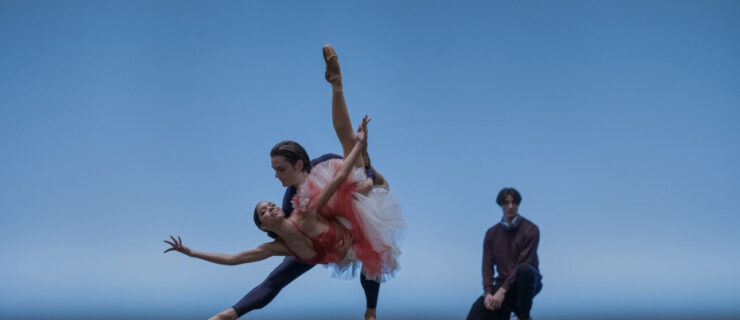Petit Allégro Pitfalls
Miami City Ballet principal soloist Alexander Peters has a fantastic petit allégro. His dynamic small jumps hit crystal-clear positions, with beats that scissor impressively—making him an obvious choice for roles like the impish Puck in George Balanchine’s A Midsummer Night’s Dream. But that apparent effortlessness didn’t come easily. As a student, he struggled to maintain his turnout in the air. “I spent so many hours at barre, strengthening my turnout so I didn’t have to think about it when it came time to jump,” he says.
Petit allégro can reveal a dancer’s strengths—and weaknesses. When you’re doing fast jumps, it’s easy to lose your turnout, let your feet flop or forget to use your plié. Don’t just muddle through! Instead, slow down and figure out why you’re having trouble. Dance Spirit talked to Peters and two fellow professionals about the most common petit allégro problems, and what to do to give your small jumps a lift.
Turnout Troubles
If you lose your turnout during petit allégro, you probably aren’t supporting yourself properly at barre. Kay Mazzo, a teacher at the School of American Ballet, suggests removing your arm from the barre intermittently as you work, to make sure your weight is in the right place. “It should be over your toes,” she says. “That forces you to pull up from the tops of your legs and hips to maintain your turnout,” rather than twisting from your knees. And be sure your back isn’t swayed, another sign that you’re not rotating from the correct place.
Lifting your heels in plié before you jump will also affect your turnout. “As soon as that happens, you have less surface area to push from, which makes it more likely that your feet will turn in,” says San Francisco Ballet School teacher Damara Bennett. As you plié in fifth position to prepare for a jeté or an assemblé, think of keeping your entire foot on the floor before you brush and leading with your heels as you jump—especially if the movement includes beats. “That will create a scissoring side-to-side motion,” says Peters, “instead of turned-in legs that go front to back.”
Plié Problems
A good plié is the foundation of petit allégro. “Dancers who don’t use their plié correctly end up bouncing all over the place like a yo-yo,” Mazzo says. “There’s no control.”
You might think that since the steps are so fast, there’s no time to plié. But trying to jump with straight legs will actually slow you down. When there’s no elasticity in your legs, “the momentum gets stuck,” Peters says. “A smooth plié will absorb the shock of the jump and keep you moving in the right direction.” Accent the “down” part of the step, and each transition will happen more efficiently. “I think of hanging the position in the air for a second, but getting back to the floor quickly,” Peters says.
Terrible Toes
Floppy feet can ruin even the most impressive petit allégro combinations. “Make sure your toes are pointing right underneath you, so it doesn’t look like a fish dangling,” Peters says. “Dancers also tend to forget about the second foot in glissade, so it ends up looking like a club.”
Thinking about your feet will help with noise control, too. “You’re not just bouncing up in the air and slamming down,” Mazzo says. “Especially for girls in pointe shoes, be sure to roll all the way through the toes and metatarsals as you return to the floor,” which will keep your shoe boxes from making clomping noises.
Poor Port de Bras
It’s easy to focus on your fast-moving legs and feet and forget about your arms. Sometimes, port de bras troubles stem from coordination issues. “In petit allégro, the arms have to work a little faster than the legs in order to get to each position at the right moment,” Bennett says. In a simple jeté, for example, the arm should come down while you’re still in plié and lift to first by the time you’re up in the air. If you’re having trouble, work on the feet and épaulement first, keeping the arms in fifth en bas. As you become more comfortable with the legwork, add in the arms, thinking about when each arm should arrive where.
Trouble with port de bras can also be a sign that you’re not supporting your back correctly. “Think of the top of your body going slightly forward when you jump,” Mazzo says. “If your arms are behind you, they’ll be a hindrance and not a help.” Lift your elbows and send energy out through your arms and fingers as you jump, keeping your back broad and open.



